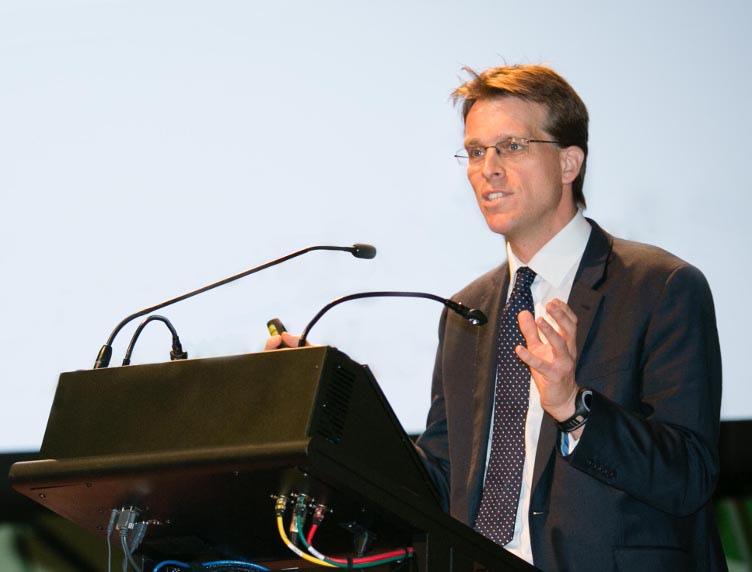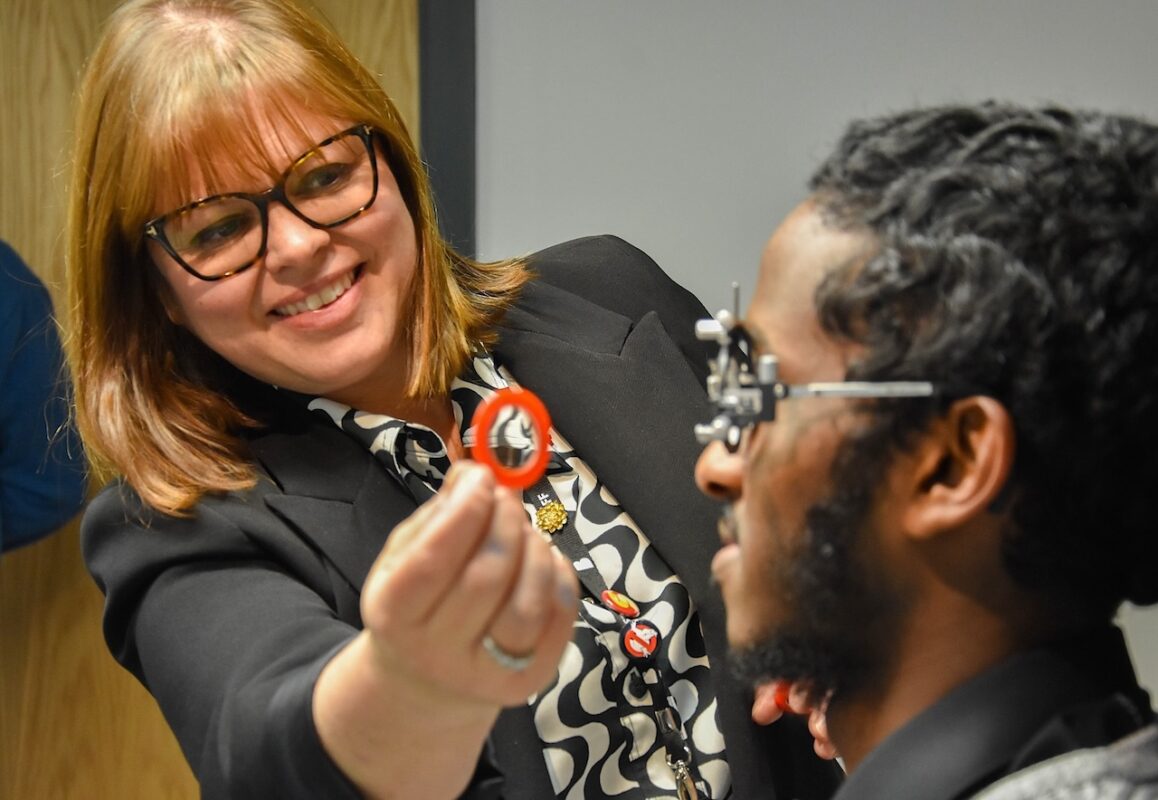Universities pledge to reduce equality gaps dramatically within five years

The access gap at England’s most selective universities will almost halve in the next five years if universities meet the ambitious new commitments they have made on equal opportunities, according to a new report from the higher education regulator.
Young people from the most advantaged areas of England are currently over six times as likely to attend one of the most selective universities – including Oxford, Cambridge and other members of the Russell Group – as those from the most disadvantaged areas, and this gap has hardly changed despite a significant expansion in the number of university places available.
At the rates of progress forecast under universities’ new plans, the ratio would be less than 4:1 by 2025, and the gap could be eliminated entirely within 20 years.
This would mean around 6,500 extra students from the most disadvantaged areas attending these universities each year from 2024-25 onwards.
In late 2018, the Office for Students (OfS) set new national targets to achieve equality of opportunity in higher education by tackling gaps in entry rates, dropout rates and degree outcomes between different groups of students.
Universities and colleges have since been drawing up their own strategies – called access and participation plans – to work towards these targets. The OfS has now approved over 200 of these plans, which set out each higher education provider’s commitments to ensuring that students from all backgrounds can get in to university and succeed while there and after they leave, and are a requirement of being able to charge higher tuition fees.
The OfS’s analysis of these plans reveals that, by the 2024-25 academic year, if universities and colleges meet their new targets:
- the gap in dropout rates between students from the most and least represented groups would fall from 4.6 to 2.9 percentage points
- the gap between the proportion of white and black students who are awarded a 1st or 2:1 degree would drop from 22 to 11.2 percentage points
- the gap between the proportion of disabled and non-disabled students who are awarded a 1st or 2:1 degree would reach a level close to equality, falling from 2.8 to only 1 percentage point.
However, the analysis also highlights some areas of ongoing concern:
- Mature students have not been sufficiently prioritised by many universities and colleges despite low and decreasing numbers of such students.
- Many approaches to addressing the needs of some smaller groups of students who are particularly underrepresented – such as care leavers, people estranged from their families, young people from military families, and people from Gypsy, Roma and Traveller communities – are still only in the very early stages of development.
- Some issues that underpin inequality in higher education – like geographical disparities in school attainment – could be tackled much more effectively through a joint effort between universities, colleges, schools, local authorities and third sector organisations.
The OfS has put in place a range of measures to hold universities and colleges to account on the commitments they have made:
- 14 plans were approved for a shorter time than the maximum five-year period: five for up to three years, six for up to two years and three for one year.
- 90 providers have received enhanced monitoring requirements, which require them to report on specific commitments in their plans on top of the annual impact report process to which all providers are subject.
- 79 providers have received formal communications, which draw attention to particular areas of the plan they will be expected to address in their first annual impact report in 2022.
- To date, no plans have been refused and no specific conditions have been applied (in the previous plan process, five providers received specific conditions).
Speaking later tonight [29 Jan] to MPs at a parliamentary event, Sir Michael Barber, Chair of the OfS, will highlight stark regional disparities in access which it will be important for universities and college to address, saying:
‘The chance to go to university has been something of a postcode lottery, and I welcome the ambitious commitments universities are making to change this state of affairs. What is an assumed rite of passage for many young people across the country is often viewed very differently in rural and coastal communities, the industrial heartlands and military towns.
‘The North-South divide crops up in many debates around equal opportunities, and higher education is no exception. While areas of extremely low participation are particularly uncommon in the capital, this is also the case in almost a third of parliamentary constituencies across England. In the North East though, only two out of 29 constituencies contain no such areas.
‘In London, 54 per cent of young people go into higher education, but this falls to 39 per cent in the North East and in the South West it is only 37 per cent. So this is more than a simple North-South divide. In fact, the South West has the lowest participation rate of any region, while our most elite universities tend to recruit far fewer students from the West Midlands.
‘Our flagship programme, Uni Connect, is working hard to address geographical disparities in university access by supporting thousands of young people in low participation areas to understand the benefits and realities of higher education. Inequality is not unique to higher education, but mirrors patterns we see across society. A joined-up approach between universities, colleges, schools and other local partners will, therefore, be instrumental in achieving the transformational change we need.’
James Turner, Chief Executive of the Sutton Trust said:
“There is some great work underway in universities and a robust focus from OfS on widening access to higher education.
“But as today’s report shows, there are still significant regional disparities in who gets into the most selective universities. More must be done to tackle these geographical divides, so it is great to see universities setting out ambitious plans to halve the gap between the poorest and wealthiest areas within five years. The focus now must be on implementation and on ensuring that these targets are met and real progress is made on a decades-old problem.
“We know that inequalities in higher education go beyond the point of entry, so the focus on closing gaps in dropout rates and degree outcomes is also welcome. It is vital that all young people not only have the same opportunities to access higher education, but also to succeed once they get there.”
Reform Education lead, Imogen Farhan, said:
“The intention behind this pledge is welcome and more active monitoring of universities performance by the regulator will make a difference.
“But whether the OfS’ proposals are radical enough to reverse universities terrible track record on widening participation is questionable. Just 12 per cent of students came from low participation neighbourhoods in 2018/19 – the same proportion as in 2014/15.
“These plans will not force universities to publish in depth analysis of how widening participation budgets are spent, making detailed evaluation of value for money impossible. The OfS will also primarily use neighbourhood-level data to measure its success, which ignores key indicators of disadvantage such as a free school meal status.
“Unless these issues are addressed, the OfS may struggle to achieve its ambitious objective.”
Angela Rayner MP, Labour’s Shadow Secretary of State for Education, responding to the news that private schools have criticised plans for selective universities taking on more poorer students, said:
“It is simply unacceptable for the most expensive and elitist private schools to oppose plans to widen access to our universities. Access to education is a right for all, not a privilege to be purchased, and our higher education system must reflect that.
“Radical reform is needed to make higher education genuinely accessible to all students, regardless of their background.
“The government should take this action urgently, including the use of contextual, post-qualification admissions, and the reintroduction of maintenance grants.”
Universities Minister Chris Skidmore said:
“It is damning for the sector that large gaps still remain between disadvantaged students and their peers. We cannot let this talent be wasted, which is why we’re investing in the Opportunity Areas programme to narrow the attainment gap.
“I am pleased to see universities being ambitious in their plans to reach out to those from disadvantaged backgrounds and to support them through their studies. But for universities which do not meet their registration conditions, I fully support the Office for Students to take appropriate action.”
Further information:
- The DfE is spending a total of £72 million in the 12 Opportunity Areas over 3 years, 2017 to 2020. In November, we announced £18 million to extend the Opportunity Area programme to run until August 2021.
- We are investing £24 million in the Opportunity North East programme to improve education outcomes and opportunities for young people in the region.
Writing in the commentary to the report, “Transforming opportunity in higher education: An analysis of 2020-21 to 2024-25 access and participation plans” Chris Millward, Director for Fair Access and Participation at the OfS, said:
‘Today’s young people are significantly more likely to go to university than their parents and grandparents were, but this expansion in higher education has not benefited all parts of society. Despite gradual progress in improving access for people from underrepresented and disadvantaged groups, equality gaps have remained stubbornly large. ‘Slow and steady’ progress is simply too slow when people’s livelihoods and opportunities are at stake.’
‘We have seen a real step change in ambition [this year], not only in the outcomes providers are striving for, but also in their commitment to continuously improving the ways they work towards those outcomes. There is also growing recognition that these issues cannot be tackled singlehandedly by one team in a university working in isolation. They require staff at all levels, across the whole institution, to share the same vision and sense of duty with all of their students.’
‘This puts us on the right track for the generational change we have set as our ambition.’
On the OfS’s national targets, he added:
‘We expect providers to work towards these targets because they tackle two urgent priorities: the need to open up all of our universities to people from those communities where progression into higher education is lowest, and to ensure that every student has the same chance to succeed once they get there.
‘At current rates of progress, we could hope to see equal access to our most selective universities for young people – regardless of where they grow up – within 20 years. But this will require significant work to raise attainment in schools, to develop clear pathways combining academic, financial and personal support, and to develop admissions processes that do not rely on public examination results alone as the way to identify potential.
‘In addition, our national target will not be achieved unless universities also embrace those harder-to-reach students who are looking to return to education later in life and provide more flexible learning opportunities for them.’
He concluded:
‘Regulation is a means to an end: better outcomes for all students. Higher education can transform the lives of individual students and the places where they study and work. But this will only benefit all parts of the country and all types of people if there is a fair and equal opportunity for all. That’s the challenge we have set for universities in this country and we’re expecting them to deliver on it.’
Young people (18-20 year olds) living in the most advantaged areas of England (POLAR4 Quintile 5) are currently 6.24 times as likely to enter the most selective universities as those from the most disadvantaged areas (POLAR4 Quintile 1). If all the high-tariff universities with a target related to this gap meet their targets, this ratio would fall to 3.72:1 by 2024-25. By 2038, this ratio would be much closer to 1:1.
This analysis is based on the 171 access and participation plans that had been approved as of 31 October 2019.
Regional higher education participation rates are available in the Department for Education’s annual ‘Widening participation in higher education’ statistics.
In England, 16 per cent of all postcodes are in the areas where participation in higher education is lowest (POLAR4 Quintile 1 areas), so any constituencies where more than 16 per cent of postcodes are in POLAR4 Quintile 1 have above average rates of low participation. In London, there is only one such constituency – Hornchurch and Upminster, where 31 per cent of postcodes are in POLAR4 Quintile 1 areas – while 66 out of 73 constituencies contain no postcodes in these areas. In the North East, only two out of 29 constituencies (Hexham and Berwick-upon-Tweed) contain no postcodes in extremely low participation areas, and only seven constituencies are below the 16 per cent average. The constituency with the lowest participation in the England is Nottingham North, where 94 per cent of postcodes are in POLAR4 Quintile 1 areas, followed by Bristol South where 80 per cent of postcodes are in this category.
The Uni Connect programme offers advice, guidance and events on the benefits and realities of higher education for students from underrepresented groups. The national programme is currently funded by the OfS at £60 million per year and brings together 29 partnerships of universities, colleges and other local partners across England to deliver sustained and progressive outreach programmes to young people in years 9 to 13.
The programme is intended to complement and add value to the work that higher education providers undertake through their access and participation plans, in particular work that is best delivered in collaboration. The work of the partnerships is focused on local areas where higher education participation is lower than might be expected given the GCSE results of the young people who live there.
The first phase of the programme ran from August 2017 till July 2019 and engaged 180,922 target learners in 1,613 schools and colleges. The second phase started on 1 August 2019 and will run until July 2021. For the second phase, the regional partnerships are setting up new outreach hubs. These hubs will be the first point of contact for state-funded schools in the local area to access impartial information and advice on the higher education outreach provision that is available in the area. They will also build up a sustainable infrastructure for future collaborative work between higher education providers, schools and other local partners.











Responses